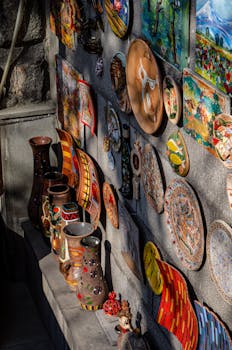The Intersection of Artisanal Crafts, Subcultures, and Emerging Niche Markets
In an era dominated by mass production and global consumerism, there’s a growing appreciation for the unique, the handmade, and the hyper-local. Artisanal crafts, subcultures, micro-markets, rare collectibles, and emerging trends are carving out significant spaces in niche markets. These niches not only celebrate individuality and craftsmanship but also foster communities of like-minded enthusiasts. Let’s delve into these fascinating worlds and explore how they intersect to create vibrant and sustainable ecosystems.
Artisanal Crafts and the Revival of Handmade
The resurgence of artisanal crafts is a testament to our collective desire for authenticity and personal connection. Artisans, whether they are potters, weavers, woodworkers, or jewelers, pour their hearts into every piece they create. This dedication results in products that are not just functional but also imbued with stories and emotions.
Artisanal crafts often draw from traditional techniques passed down through generations, blending heritage with contemporary design. This fusion appeals to a wide audience seeking items that stand out in a sea of uniformity. Moreover, the rise of e-commerce platforms like Etsy has democratized access to these handmade treasures, allowing artisans to reach global markets while maintaining their unique identities.
Subcultures and Micro-Markets: The Power of Niche Communities
Subcultures thrive on shared passions, values, and aesthetics. From steampunk to minimalism, these communities create micro-markets where specialized products and services flourish. Members of subcultures often seek out items that reflect their unique identities, leading to a demand for bespoke and niche offerings.
For example, the steampunk community celebrates an alternate history where Victorian-era technology is powered by steam. This fascination translates into a micro-market for steampunk-inspired clothing, accessories, and home decor. Similarly, minimalists might seek out sleek, functional items that align with their aesthetic principles, creating opportunities for designers who specialize in clean, uncluttered designs.
Rare Collectibles and Hyper-Local Trends
Rare collectibles hold a special allure for enthusiasts who appreciate the scarcity and uniqueness of these items. Whether it’s vintage vinyl records, antique furniture, or limited-edition art prints, rare collectibles often come with a rich history and cultural significance.
Hyper-local trends further enrich this landscape by celebrating regional craftsmanship and materials. For instance, a local potter might use clay sourced from nearby quarries to create ceramics that embody the essence of their region. These hyper-local products not only support local economies but also preserve traditional techniques and materials.
Emerging Trends in Niche Markets
The world of niche markets is dynamic, with new trends constantly emerging. Sustainability, for example, has become a significant driver in many niches. Consumers are increasingly seeking out eco-friendly products made from sustainable materials and produced using ethical practices.
Another emerging trend is the integration of technology into artisanal crafts. 3D printing, laser cutting, and other digital tools are being used to create unique, customizable items that blend traditional craftsmanship with modern innovation. This fusion appeals to a tech-savvy audience looking for personalized, high-quality products.
Conclusion
The intersection of artisanal crafts, subcultures, micro-markets, rare collectibles, and emerging trends creates a rich tapestry of niche markets. These niches not only offer unique products but also foster communities built on shared passions and values. As consumers continue to seek out authenticity and personal connection, the demand for these specialized offerings is likely to grow. Whether you’re an artisan, a collector, or simply someone who appreciates the handmade, there’s a niche market waiting to be explored.
“`